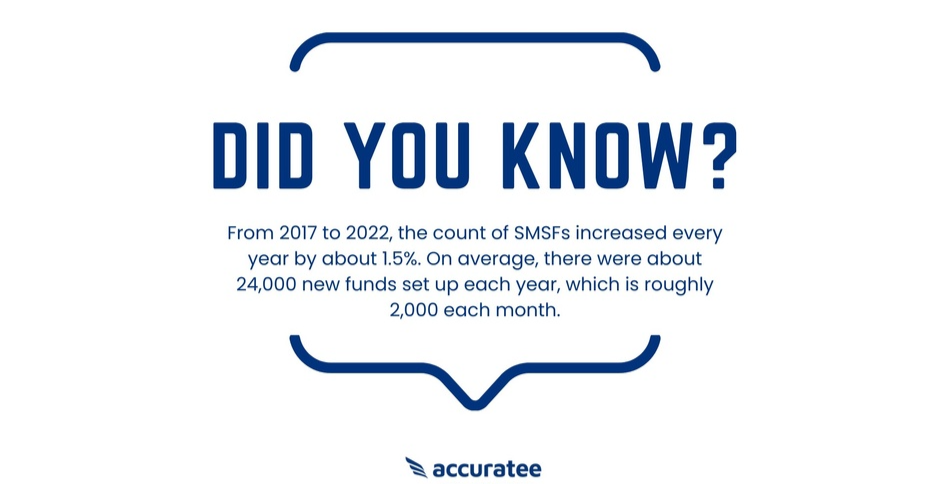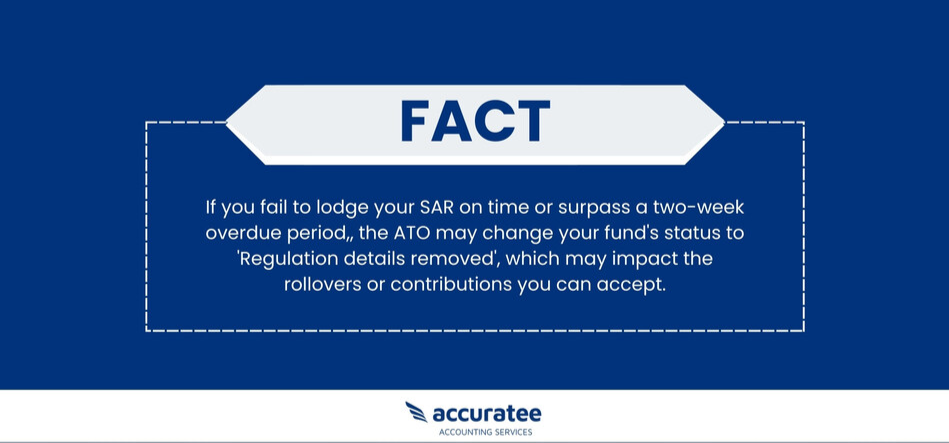A key guide to set up and managing self managed super funds (SMSF)
Introduction:
Setting up and managing your own Self Managed Super Fund (SMSF) is an exciting way to take on more control of your long-term financial security. The power of a SMSF lies in its ability to offer you the flexibility and autonomy needed to make decisions for yourself, as well as tax effective investment options that may not be available within retail or industry superannuation funds.
With just a few steps, you can get your fund established and develop an effective strategy for success. But getting it right makes all the difference! This guide outlines everything from setting up to finalising annual accounts, so that you can do this with confidence. Read on for key information about how to set up and manage an SMSF with ease!
Key takeaways
SMSFs offer control and flexibility over retirement savings, with unique investment options.
Setting up an SMSF requires careful consideration and guidance from a financial adviser.
SMSF annual returns can be lodged electronically or via paper form, with different due dates.
Professional SMSF accountants like CleanSlate assist with setup, compliance, annual returns, and ongoing support.
Self managed super funds meaning
An SMSF (Self-Managed Superannuation Funds) is a type of trust that allows up to four individuals to pool their funds and assets for the purpose of generating retirement benefits in the future. In most cases, all members of an SMSF are required to serve as trustees of the fund, or as directors of the fund's corporate trustee, unless there are specific circumstances that permit otherwise.

What are the key considerations when setting up an SMSF?
When considering setting up an SMSF, think of it like becoming the boss of your own retirement savings. You will need to decide where to invest your money and make sure you follow all the rules. This job requires time and some knowledge about how money and investing work.
An important rule to remember is that the money in the SMSF is meant only for your retirement, and you can't use it for personal things like buying a holiday house or art. If you don't follow this rule, you could get into big trouble. If things seem difficult or confusing, It's a good idea to consult with a qualified and licensed financial adviser to ensure you're making the right decisions. They can guide you through the process, help you understand the complex rules, and advise you on the best investment strategies for your fund.
What is the procedure to set up SMSF?
Setting up an SMSF can seem daunting, but it's a great way to take control of your retirement savings. To get started, you'll need to create a trust with individual or corporate trustees who will manage your SMSF assets and ensure legal compliance.
You'll also need to develop an investment strategy that considers the risks involved and the age and risk profiles of your fund members. Once your SMSF is set up, you'll need to register it with the ATO, obtain an ABN and TFN, and ensure ongoing compliance with regulatory requirements.
Running an SMSF can be time-consuming and complex, and it's important to manage the associated risks effectively. This is why seeking professional assistance from SMSF accountants or financial advisors is highly recommended.
At CleanSlate, we understand the complexities of managing an SMSF and offer a range of services to help you set up, manage, and grow your fund while mitigating risk. Our experienced professionals provide ongoing support and advice to ensure you achieve your retirement goals while minimizing risk.

What are the benefits of setting up an SMSF?
Setting up a Self-Managed Super Fund (SMSF) can offer several benefits for individuals seeking more control and flexibility over their retirement savings.
Firstly, it provides investment control, enabling SMSF trustees to invest in a range of asset classes beyond traditional stocks and shares, such as direct property, collectables, and even cryptocurrencies.
Additionally, SMSFs estate planning provides an opportunity to pool multiple members' superannuation into one fund and ensure compliance is maintained.
Moreover, SMSFs can be a tax-effective strategy for retirement savings, with current tax rates on earnings inside superannuation structures being only 15 percent.
How to lodge an SMSF annual return (SAR)?
To lodge your SMSF Annual Return (SAR), you have two options. You can either submit it electronically through Standard Business Reporting (SBR) using SBR-enabled software and a machine credential or send a paper form by mail. For paper lodgment, download the SMSF annual return and instructions, complete them, and mail them to the Australian Taxation Office at the provided address.
Make sure to include super regulatory information and member contributions, and pay the SMSF supervisory levy. Remember, SARs do not receive a notice of assessment as SMSFs assess their own tax debt or refund.
The lodging due date varies depending on your SMSF. For newly registered SMSFs and overdue annual returns, the due date is October 31st, with a payment deadline on December 1st. For all other self-preparing SMSFs, the due date is February 28th, with the payment due on the same date.
Ensure that your SMSF's audit is completed and include the correct auditor details in the SAR to avoid penalties. Failure to lodge the SAR by the due date can result in penalties and the loss of tax concessions.
At CleanSlate, we are dedicated to providing exceptional SMSF tax return services, focusing on simplifying the lodgment process for our clients. With a user-centric approach, we offer convenient options to submit your SMSF Annual Returns (SAR) with ease.
Whether you choose our SBR-enabled software for electronic lodgment or opt for traditional paper lodgment, our goal is to make the process seamless and hassle-free. We guide you through each step, ensuring accuracy in including super regulatory information, member contributions, and auditor details. Trust CleanSlate for a smooth SAR lodgment experience, minimizing complexities and maximizing efficiency.

What are the common mistakes to avoid when lodging an SMSF annual tax return?
When lodging an SMSF annual tax return, it is crucial to avoid common mistakes that can have serious repercussions. Firstly, ensure that the SMSF audit is completed and finalized before lodging the return to ensure accurate reporting and reduce the risk of errors or omissions. Include the accurate details of the external auditor, such as their SMSF auditor number, name, and audit finalization date.
Providing an incorrect Electronic Service Address (ESA) can lead to failed transactions and non-compliance with SuperStream, so double-check and use the correct ESA. Opening a dedicated bank account in the SMSFs name is essential to maintain compliance and protect the retirement benefits of members.
Lastly, attempting to lodge a return with zero assets goes against the fundamental requirements of an SMSF, so ensure your fund has appropriate assets and member account balances before lodging the return. By avoiding these mistakes, you can ensure smooth compliance and optimize the financial outcomes of your SMSF.
What are the best practices and strategies for ensuring SMSF compliance?
To ensure Self Managed Super Funds compliance, it is important to follow a series of best practices and strategies. Firstly, maintaining accurate and updated records, such as financial records and member contributions, is essential. Regularly reviewing the fund's compliance with superannuation laws and regulations is crucial as well. Staying informed about legislative changes and seeking professional advice when necessary is recommended.
Implementing an investment strategy aligned with the fund's objectives and members' risk profiles is vital, which includes diversifying investments, conducting thorough due diligence, and regularly assessing the portfolio's performance. It is also crucial to keep personal and SMSF assets separate and avoid any prohibited transactions. Engaging the services of a qualified SMSF auditor for an annual audit helps ensure compliance with reporting and disclosure obligations.
Lastly, an SMSF investment strategy should consider risk, return objectives, liquidity, and member preferences while maintaining diversification and working towards the fund's long-term retirement goals.
Expert Bookkeeping at Your Fingertips!
What is an SMSF investment strategy, and what are the risks associated with an inadequate investment strategy?
An SMSF (Self-Managed Super Fund) investment strategy outlines how the fund's assets should be invested, considering factors like diversification, liquidity, member's risk tolerance, and retirement goals. An inadequate SMSF investment strategy can lead to several risks.
It may result in a lack of diversification, which could expose the fund to significant losses if one asset class performs poorly. It could also lead to illiquidity, making it difficult to pay out benefits when needed.
Moreover, it may not align with members' risk profiles and retirement objectives, potentially leading to insufficient retirement savings. Therefore, regular reviews and adjustments to the investment strategy are crucial for risk mitigation.
What are the key considerations for investing in property through SMSF?
Investing in property through an SMSF requires awareness of key considerations. Unlike buying a personal property, there are additional regulations and limitations for obtaining a bank loan, such as the SMSF limited recourse borrowing arrangement. Tax implications should also be taken into account.
Purchasing commercial property or properties overseas using an SMSF entails further complexities. Seeking guidance from knowledgeable professionals who understand SMSF regulations, property investment, and tax requirements is advisable. Their expertise will ensure that you navigate the process successfully and comply with all relevant regulations.
How can a professional accountant help you with your SMSF?
A professional SMSF accountant can provide valuable assistance in managing your SMSF. They can help you set up your fund, ensuring compliance with superannuation and taxation legislation. They can handle the fund's bookkeeping, financial records, and annual return preparation and lodgement. An accountant can guide you in formulating a sound investment strategy and ensure ongoing legal compliance. They can also assist during tax season, maximizing your benefits and handling all necessary preparations and lodgements.
Additionally, an accountant experienced in SMSFs can provide ongoing support, including regular audits, and help navigate the complexities of superannuation and taxation laws. By engaging an accountant, you can gain expert advice, minimize the risk of breaching regulations, and have peace of mind in managing your SMSF effectively.
Tips for managing SMSF accounting at the end of the financial year
Managing your Self-Managed Super Fund (SMSF) accounting at the end of the financial year can be a complex task. Below are some tips to help ensure that your SMSF accounting is appropriately managed:
- Ensure all financial transactions are accurately recorded and classified.
- Reconcile bank statements with accounting records to identify any discrepancies.
- Review investment valuations to ensure they are up to date and comply with regulations.
- Prepare and lodge the annual SMSF return on time, including all necessary schedules and documentation.
- Consider engaging a professional SMSF auditor to conduct an independent audit of your fund.
- Keep proper documentation and records to support your accounting entries and transactions.
- Stay informed about changes in tax laws and superannuation regulations that may affect your SMSF.
Remember to consult with a qualified accountant or financial advisor for personalized advice based on your specific circumstances.
Conclusion
For those considering setting up and managing a Self Managed Super Fund (SMSF), this guide offers an excellent resource to get acquainted with the process, understand the benefits associated with it, identify common mistakes to avoid when lodging an annual tax return, and become aware of best practices for ensuring SMSF compliance.
Additionally, strategies for developing an effective investment plan are outlined along with useful tips for navigating the buying of SMSF investment property through its fund. Finally, tailoring accounting processes to ensure accuracy at the end of a financial year is strongly recommended in order to ensure all obligations are met and errors avoided.
With all these considerations taken, individuals can make informed decisions about whether setting up and managing a Self Managed Super Fund fits their needs or not , and that’s exactly what CleanSlate strives to help you do. Whatever your needs may be regarding SMSF setup and management services, don't hesitate to reach out for assistance.


















